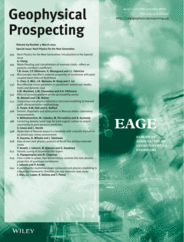-
oa Seismic tuning of dispersive thin layers
- Source: Geophysical Prospecting, Volume 69, Issue 3, Feb 2021, p. 622 - 628
-
- 11 Feb 2020
- 02 Jul 2020
- 30 Jul 2020
Abstract
The wedge model is commonly used to study the limits of seismic resolution where conventionally the thickness of sub‐resolution seismic layers can be determined from thin layer tuning curves. Tuning curves relate the layer temporal thickness to the wavelet frequency, but, to our knowledge, no systematic study has been done to date of the effects of velocity dispersion and attenuation on tuning. In this work, we study the tuning properties of a thin layer dispersing according to the standard linear solid model. We show that the first tuning curve is sensitive to the attenuation, relative polarity and magnitude of the two reflection coefficients at the top and base of the layer. We provide an analytic formula for the upper bound in the mismatch between the elastic and dispersive tuning curves. We conclude that highly attenuative thin layers can appear thicker or thinner than they actually are depending on polarity and relative magnitude of reflection coefficients at the layer interfaces. Our results are particularly relevant in the quantification of CO2 where knowledge of the temporal thickness of CO2 layers is reliant on their tuning curves.




